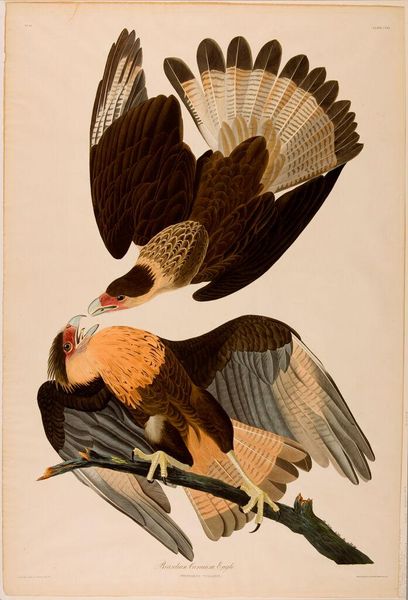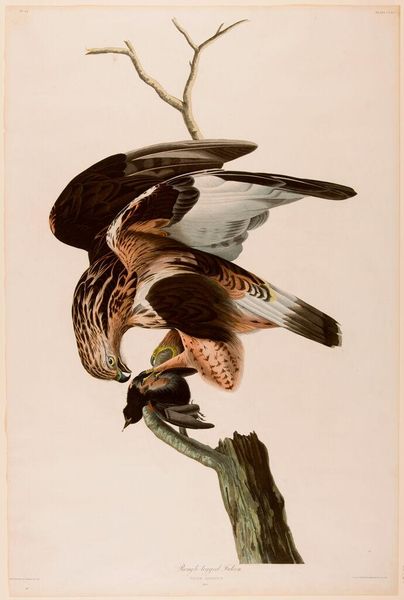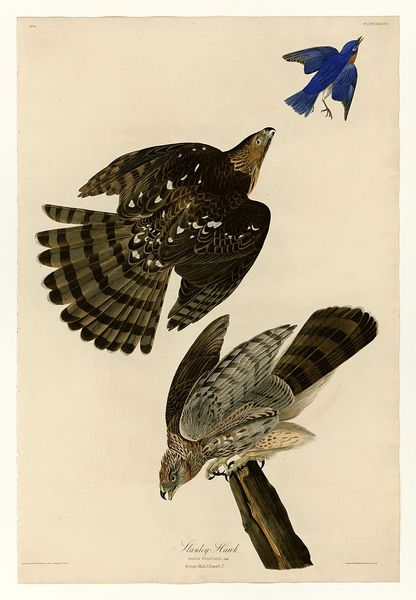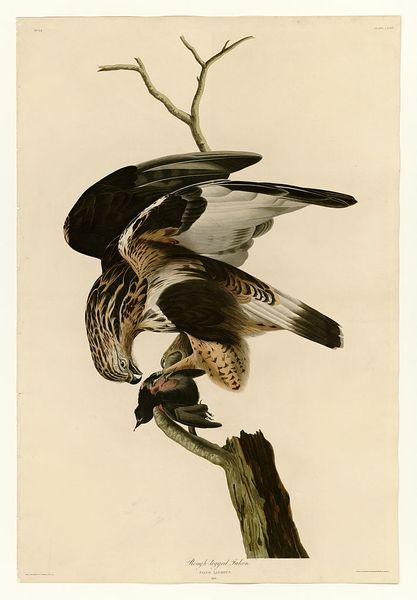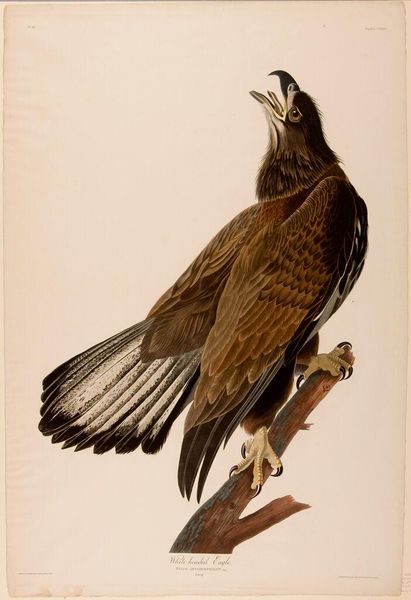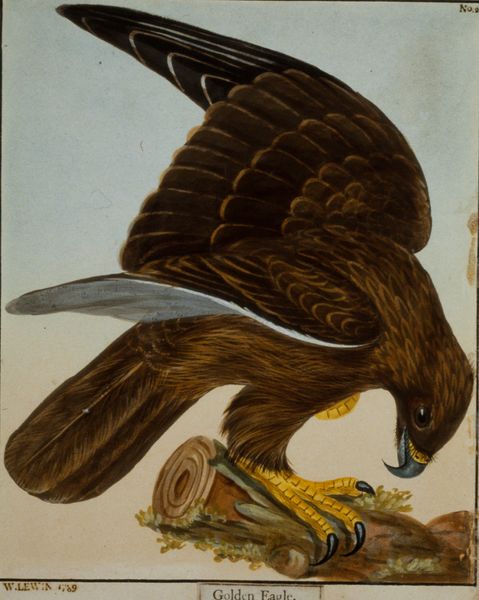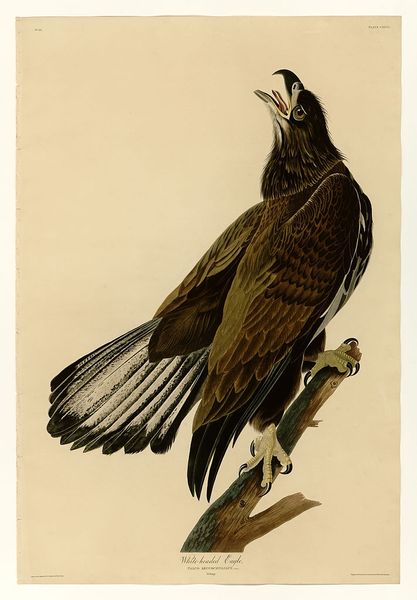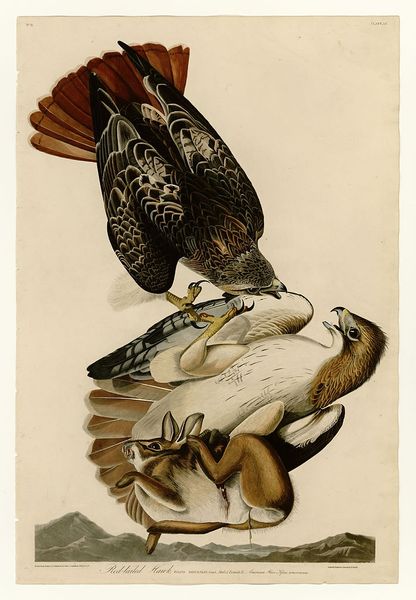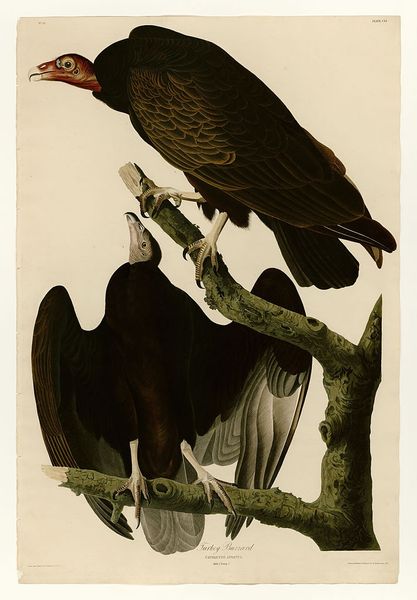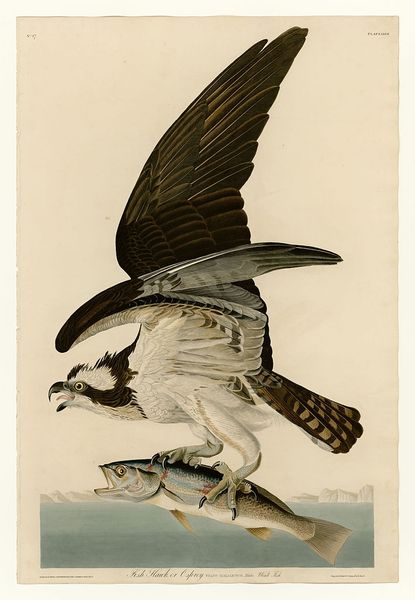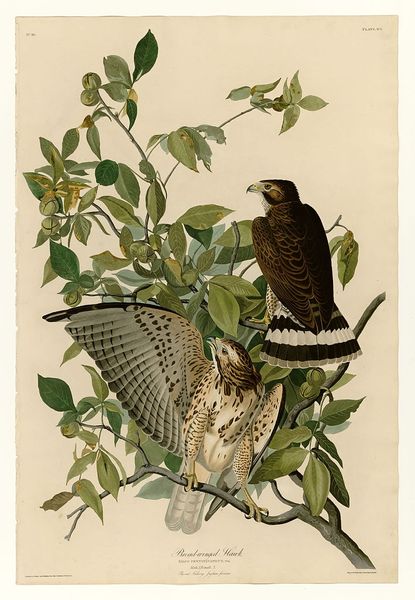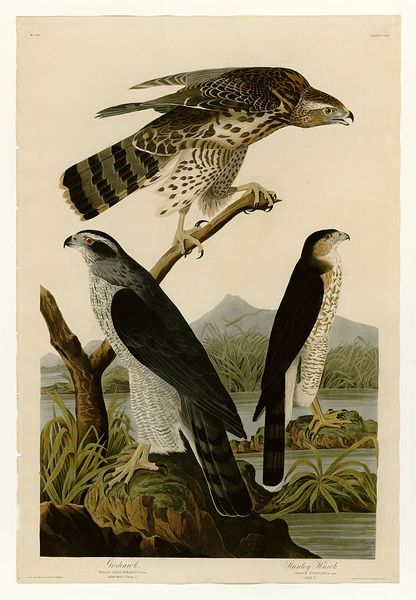
drawing, painting, watercolor
#
portrait
#
drawing
#
painting
#
impressionism
#
landscape
#
bird
#
watercolor
#
muted green
#
romanticism
#
hudson-river-school
#
animal drawing portrait
#
watercolour illustration
#
naturalism
#
watercolor
Copyright: Public domain
Curator: The painting before us is entitled "Plate 86 Black Warrior" by John James Audubon. What strikes you first about it? Editor: Immediately, there's a powerful duality. One hawk, stoic and upright, watches, while the other, wings splayed, dives headlong. There's this stark contrast between stillness and impending action. It's quite dramatic. Curator: It certainly is! Audubon, in his distinctive naturalism, wasn't just painting birds, he was capturing these fleeting moments of their existence, as though pausing life to show us its intricate details. Editor: The way the artist frames the birds on these stark branches—it's almost like they're suspended in a void. Considering Audubon's complicated legacy regarding race and the use of enslaved people in his practice, I'm always compelled to think about who gets framed, and whose stories get centered. Curator: Yes, his art exists within a complex social history. Shifting to his process, you see that this image is built with watercolor and drawing. There is so much going on here - the detailed plumage and then, almost impressionistic blur. Does this blend convey more to you about its nature? Editor: The watercolors give this ephemeral feel to a rather grounded study. The work also feels like a bridge between different ways of understanding our place in nature. There is a blend of scientific cataloging with artistic interpretations of Romanticism that I find endlessly fascinating. Curator: I think he's showing us that scientific precision and art don’t have to exist separately, that observation is its own kind of poetry, a deeply reflective way to perceive nature around you. Editor: It's a negotiation between control and freedom. Perhaps the most haunting aspect is considering how Audubon was chronicling these birds when he began seeing their species dwindle during his own lifetime, as if knowing how things would end. It begs the question: What does it mean to look and document while something vanishes? Curator: A painful responsibility to bear witness to. Now looking at Audubon's Black Warrior, a painting of arresting duality, his personal tragedy resonates through the artwork, doesn’t it? Editor: It does, doesn’t it? I think his efforts open up many compelling thoughts that allow us to bring new energy to conversations regarding the relationships between art, history, science and human experience.
Comments
No comments
Be the first to comment and join the conversation on the ultimate creative platform.

